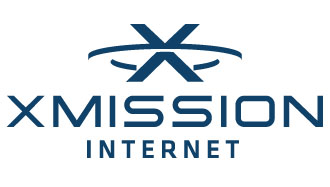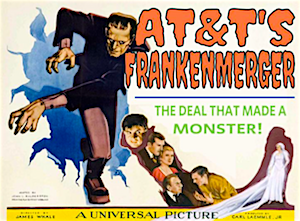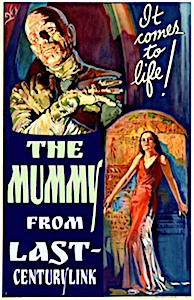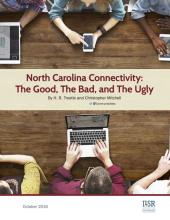
Fast, affordable Internet access for all.

Comcast is the second Internet Service Provider (ISP) suing the mayor and metro government of Nashville, Tennessee (pop. 680,000) to stop a new ordinance to give streamline access to utility poles in the city, reports Cnet.com news.
Comcast’s October lawsuit over the Google Fiber-supported One Touch Make Ready ordinance (OTMR) comes on the heels of AT&T's legal action in late September. We wrote about AT&T’s lawsuit shortly after the filing.
Cnet.com reported that most of the utility poles are owned by Nashville Electric Service (NES) or AT&T, but Comcast has wires on many poles and has control over how these wires are handled. “When Google Fiber wants to attach new wires to a pole, it needs to wait for Comcast to move its wire to make room, and this is where the new ordinance becomes controversial.”
Comcast’s lawsuit, filed in U.S. District Court in the Middle District of Tennessee, contends the AT&T-owned poles fall under the purview of the Federal Communications Commission (FCC) and not the city, and that Nashville Metro Council lacked authority to regulate NES poles, according to a story in the Tennessean newspaper. The telecommunications carrier is asking for a permanent injunction to stop enforcement of the ordinance.
Comcast reproduces AT&T's argument in Nashville - that the poles are within federal jurisdiction so the city does not have the authority to enforce such an ordinance.
Reverse Preemption In Louisville
Consumers should be able to expect a certain amount of privacy and recent rules adopted by the FCC are a step in the right direction. That step has also revealed some key differences between profit-driven national Internet service providers, smaller ISPs, and municipal networks. The different attitudes correspond with the different cultures, proving once again that small ISPs and munis have more than just profit in mind.
On October 27th, the FCC adopted an Order to allow ISP customers to determine how their data will be collected and used. According to the FCC, they made the decision in response to public comments about the concern for personal data protection.
The New Rules
Over the past few years, consumers have become savvy to the fact that ISPs have access to personal data and that they often sell that data to other companies for marketing purposes. Under Section 222 of Title II of the Communications Act, telecommunications carriers are bound to protect their subscribers’ private information. Because those rule are designed to change as technology changes, says the FCC and Congress, this same authority applies to private data collected by ISPs.
The FCC decided to divide the permission of use of personal information based on type, categorizing information into “sensitive” and “non-sensitive.”
Sensitive information will require ISPs to obtain “opt-in” consent from subscribers, which will allow them to use and and share this type of information:

Non-sensitive information would include all other information and customers would need to "opt-out" in order to prevent their ISPs from collecting such data. Examples of non-sensitive personal information include service tier information.
Are you spending the Halloween weekend watching scary movies on Netflix? Researching pagan rituals online? Scouring the web for last minute costume ideas? If you are don't have decent Internet access, even those simple tasks can be downright horrifying.
If you are trapped as a cable monopoly zombie, you understand the difference between Broadband Tricks or Treats. We created this graphic last year to celebrate the spooky differences between community networks and cable monopolies and it's too good to bury in a shallow grave! Here it is again...back from the (un)dead!

View a larger version of this graphic here [pdf]. Stay up to date on community networks with our newsletter!
Much like the the bone-chilling flicks celebrating eerie entertainment that dwells in the depths of our dark imaginations, monster cable and DSL Internet service providers strike terror in the hearts of subscribers…if they survive. Mesmerizing fees, hair-raising customer service, and shockingly slow connections can drive one to the brink of madness.
In celebration of Halloween 2016, our writers each selected a national ISP and reimagined it as a classic horror character. The results are horrifying! Read them here…if you dare!
AT&T’s Frankenmerger

by Kate
This shocking film tells the horrific tale of a mad scientist in his quest to create the world’s largest telecommunications monopoly monster. The scientist’s abomination runs amok, gobbling up company after company, to create a horrifying monster conglomerate. Watch the monster terrorize towns across America as it imposes data caps, denies people access to low-cost programs, and refuses to upgrade infrastructure. What nightmare lies ahead? Will the townsfolk and their elected officials unite to stop the monster, before it acquires Time Warner? Watch and find out!

The Mummy From Last CenturyLink
by Scott
Google Fiber has finally announced its plans for the future after weeks of dramatic speculation that it will lay off half its workforce and give up on fiber-optics entirely. Google has now confirmed our expectations: they are pausing new Google Fiber cities, continuing to expand within those where they have a presence, and focusing on approaches that will offer a better return on investment in the short term.
Nothing Worth Doing Is Easy
In short, Google has found it more difficult than they anticipated to deploy rapidly and at low cost. And in discussions with various people, we think it can be summed up in this way: building fiber-optic networks is challenging and incumbents have an arsenal of dirty tricks to make it even more so, especially by slowing down access to poles.
That said, Google is not abandoning its efforts to drive better Internet access across the country. In the short term, people living in modern apartment buildings and condos will be the greatest beneficiary as Google takes the Webpass model and expands it to more cities. But those that hoped (or feared) Google would rapidly build Fiber-to-the-Home (FTTH) across the country are likely disappointed (or slightly relieved, if they happen to be big incumbent providers).
This is a good moment to talk about the lessons learned from Google Fiber and what we think communities should be thinking about.
Let's start by noting something we have often said: Google Fiber and its larger "access" approach have been incredibly beneficial for everyone except the big monopolists. Its investments led to far more media coverage of Internet access issues and made local leaders better understand what would be possible after we dismantle the cable broadband monopoly.
Benoit Felton, a sharp international telecommunications analyst wrote a very good summary of Google Fiber titled Salvaging Google Fiber's Achievements. Some of my thoughts below overlap his - but his piece touches on matters I won’t address, so please check out his analysis.
I want to focus on a few key points.
This is episode 224 of the Community Broadband Bits Podcast. ILSR research associate and MuniNetworks.org writer, H.R. Trostle, joins the show to discuss the recent report on North Carolina's connectivity and the importance of cooperatives. Listen to this episode here.
H.R. Trostle: The telephone cooperative are very used to serving these very sparsely populated rural areas in North Carolina. That's what they were designed to do. That's why they were made.
Lisa Gonzalez: This is episode 224 of the Community Broadband Bits Podcast from the Institute for Local Self-Reliance, I'm Lisa Gonzalez. Recently, we released a report focusing on the availability of high-quality Internet access in North Carolina. H.R. Trostle, a research associate at the Institute and one of our authors on MuniNetworks.org, analyzed data from several different sources and she's talking to Chris this week to discuss her conclusions. She and Chris, who co-authored the report with her, discovered that municipal networks and cooperatives have an important role to play in North Carolina. Take a few minutes to check out the report and check out the detailed maps that show the results of their analysis. The report is titled North Carolina Connectivity: The Good, The Bad, and The Ugly. It's available at ILSR.org and MuniNetworks.org. Now here are Chris and H.R. Trostle, from the Institute for Local Self-Reliance, discussing in detail their recent report and their findings on Internet access in North Carolina.
Christopher Mitchell: Welcome to another edition of the Community Broad Bits Podcast. Coming to you live today from the Institute for Local Self-Reliance offices in Minneapolis, with H.R. Trostle, the co-author of our new report on North Carolina. Welcome to the show.
H.R. Trostle: Thanks Chris, it's great to be here.
Christopher Mitchell: Hannah.
H.R. Trostle: Hi.
Christopher Mitchell: I thought we would start with a broad overview of what did the report cover.

North Carolina's digital divide between urban and rural communities is increasing dangerously in a time when high quality Internet access is more important than ever. Rural and urban areas of North Carolina are essentially living in different realities, based on the tides of private network investment where rural communities are severely disadvantaged. The state has relied too much on the telecom giants like AT&T and CenturyLink that have little interest in rural regions.
The state perversely discourages investment from local governments and cooperatives. For instance, electric co-ops face barriers in seeking federal financing for fiber optic projects. State law is literally requiring the city of Wilson to disconnect its customers in the town of Pinetops, leaving them without basic broadband access. This decision in particular literally took the high-speed, affordable Internet access out of the hands of North Carolina's rural citizens.
The lengths to which North Carolina has gone to limit Internet access to their citizens is truly staggering. Both a 1999 law limiting electric cooperatives' access to capital for telecommunications and a 2011 law limiting local governments' ability to build Internet networks greatly undermine the ability of North Carolinians to increase competition to the powerful cable and DSL incumbent providers.
In the face of this reality, the Governor McCrory's Broadband Infrastructure Office recommended a "solution" that boils down to relying on cable and telephone monopolies' benevolence. What this entire situation comes down to is a fundamental disadvantage for North Carolina's rural residents because their state will not allow them to solve their own problems locally even when the private sector abandons them.
AT&T lawyers filed suit against Nashville just two days after Mayor Megan Barry signed the new One Touch Make Ready (OTMR) ordinance into law. The Metro Council passed the proposal for the final time, and sent it on to the Mayor, on September 20th.
Seeking Out Streamlining
OTMR was proposed by Google Fiber, which wants to enter the Nashville market by deploying an aerial fiber network. In order to do that, they need to attach fiber-optic cables to utility poles around town, but the current process is cumbersome and will significantly delay the rollout. OTMR streamlines the procedure but would allow some one other than AT&T to manage the rearrangement of wires on all poles in the Nashville rights-of-way. The telecom giant owns about 20 percent of the poles in Nashville; the city’s electric utility, NES, owns the rest.
Three Arguments
AT&T seeks a permanent injunction to stop the city from enforcing the new ordinance. They argue the city does not have the authority to enforce the ordinance - that role is within federal jurisdiction through the FCC.
They go on to state that the Metro Council does not have the authority to pass the ordinance because, according to the city charter, only the Electric Power Board the has the right to pass regulations that deal with issues related to equipment, such as poles and the cable on them.
AT&T also asks that the court grant a permanent injunction on the basis that they already have a contract with the city relating to AT&T’s wires that are on NES poles. The contract allows the company to handle its own wires and enforcing the ordinance would basically nullify that component of the contract.
What This Is Really About
They're at it again. Recently, they have been called out for taking advantage of E-rate; now they are taking advantage of their own lack of infrastructure investment to worm their way out of obligations to serve low-income residents. Fortunately, a nonprofit group caught up with AT&T's shenanigans and held their feet to the fire.
"Nah, We Don't Have To Do That..."
As part of FCC-mandated conditions under which AT&T was allowed to acquire DirecTV in 2015, the telecommunications conglomerate created the "Access from AT&T" program, offering discount Internet access to low-income households. The program consists of tiered services - download speeds of 10 Megabits per second (Mbps) for $10 per month, 5 Mbps for $10 per month, and 3 Mbps for $5 per month.
The company is required to enroll households in the fastest speeds available, but a significant amount of low-income families don't qualify because the fastest speed AT&T offered to their home is 1.5 Mbps download. The problem, created by AT&T's own lack of infrastructure investment in certain neighborhoods, allowed AT&T to dodge their responsibility under the terms of the DirecTV acquisition by simply denying enrollment to households with speeds less than 3 Mbps. Trouble is, some one noticed.
NDIA In Cleveland, Detroit
The National Digital Inclusion Alliance (NDIA) realized the scope of the problem when they attempted to help families in low-income neighborhoods in Detroit and Cleveland sign up for Access from AT&T. In addition to discovering that residents could only obtain 1.5 Mbps download speeds, NDIA found that AT&T denied these households enrollment because their speeds were too slow. The only other option for ineligible households was AT&T’s normal rate for 1.5 Mbps service, which is six times the cost of the Access program.
Loopholes: All Lawyered Up And Nowhere To Go
The city of Davis, California, recently released a Request for Proposals (RFP) for a citywide fiber-optic feasibility study report. The community wants to consider the options for a Fiber-to-the-Home (FTTH) network. Responses are due October 31.
The scope of the work includes:
The study should provide an analysis of options for engineering, constructing, provisioning and operating a high speed citywide FTTP network. It should feature both physical and network transport layer components required to pass and potentially connect every home, business, apartment complex, and institutional building within the City of Davis. The analysis should also consider future use at strategic infill and edge points around the City in order to support network growth through the coming decades.
Davis wants firms to consider public private partnerships, the city’s network as an open access infrastructure, and Davis is only an infrastructure provider.
In early 2015, a group of citizens formed DavisGIG to encourage community leaders to move forward by establishing a Broadband Advisory Task Force and the feasibility study. In March, Davis established a task force to examine the possibility of deploying a network to serve municipal facilities, community anchor institutions, businesses, and residents. Incumbents Comcast, AT&T, Omsoft, and non-profit Davis Community Network offer a wide range of services now and there is little consistency for the city’s 68,000 residents.
The University of California Davis (UCD) is a major employer, as is the State of California. According to the RFP, there is a growing entrepreneurial culture springing up in Davis due to the presence of UCD’s research environment. The community wants to feed that growth with a citywide, future-proof, FTTH network.
Important due dates:
Send questions to Diane Parro, Chief Innovation Officer: clerkweb(at)cityofdavis.org.